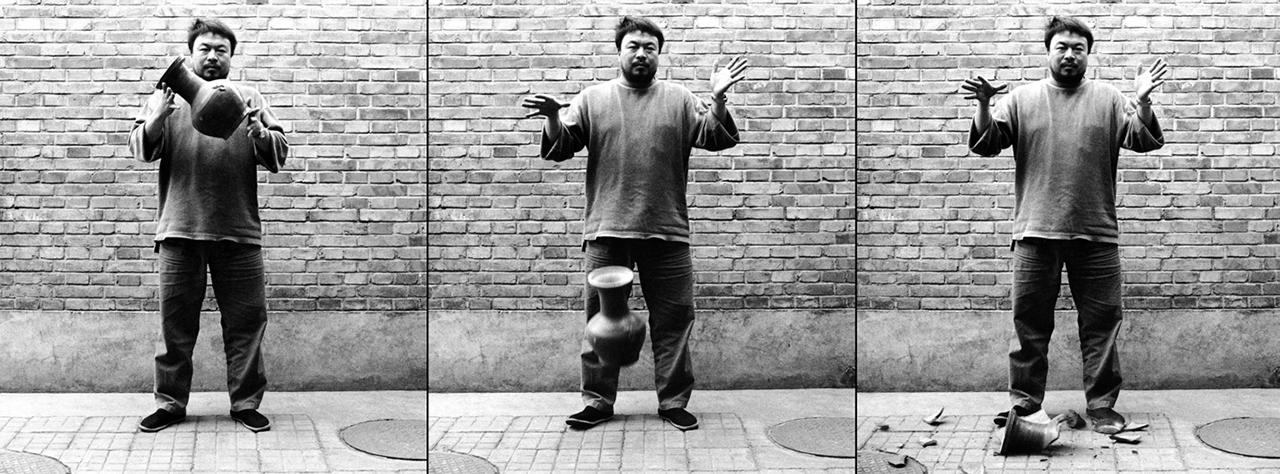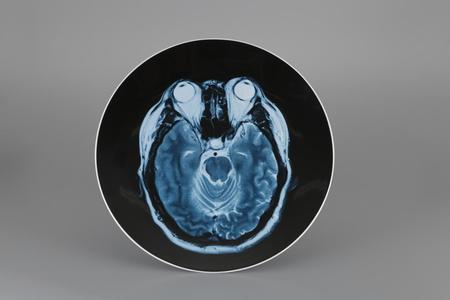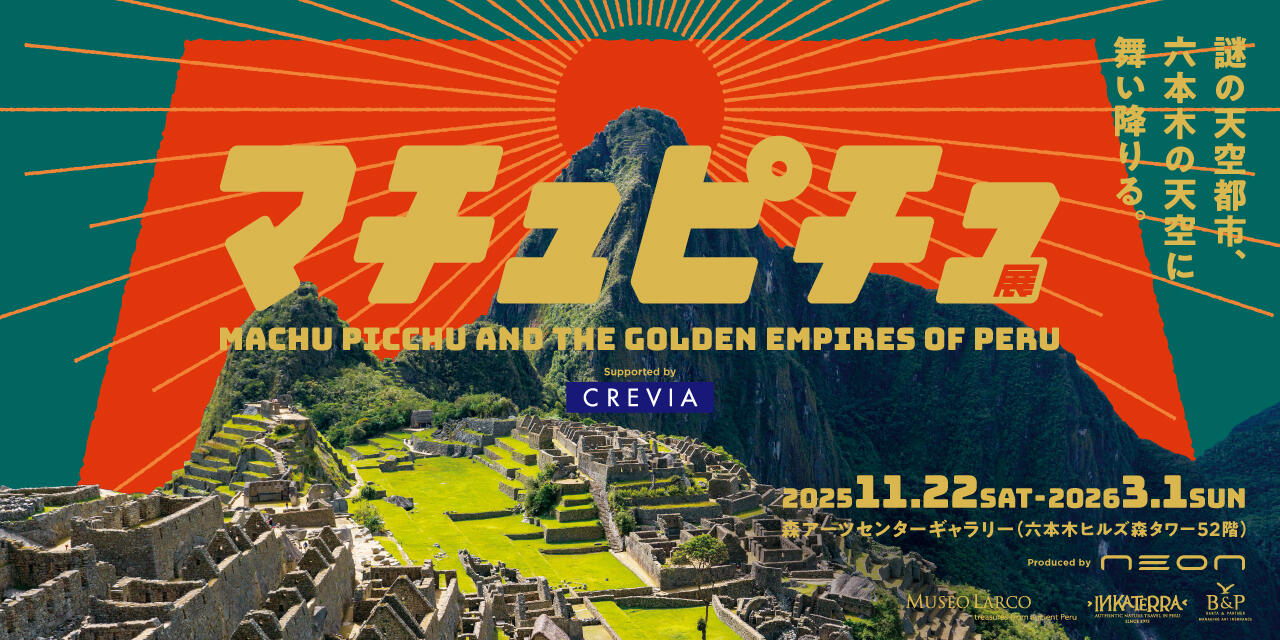Dropping a Han Dynasty Urn
| Artist | : | Ai Weiwei (1957-) |
|---|---|---|
| Nationality | : | China |
| Year | : | 1995/2009 |
| Material | : | Lambda print |
| Size | : | 180 x 162 cm (each, set of 3) |
Active not only as an artist, Ai Weiwei is also a philosopher, political activist, and architect. His early life until he went to university was marked by poverty because his father, the poet Ai Qing, was exiled to Xinjiang in northwest China due to the government’s laogai “reform through labor” system and then the Cultural Revolution (1966-1976). Ai moved to the United States in 1981, studying contemporary art in New York and beginning to work as an artist. After returning to China in 1993, he established a studio in Caochangdi, Beijing, and devoted himself to the development of contemporary art in China through architectural projects, curating exhibitions, and publications. Held at Mori Art Museum in 2009, Ai Weiwei: According to What? was the artist’s first comprehensive solo exhibition, and subsequently toured to five museums in North America. He has since held solo shows at major art museums around the world and appeared in numerous group shows and international exhibitions.
Dropping a Han Dynasty Urn is a set of three photographs that show the artist holding and dropping a two-thousand-year-old urn from the Han dynasty (206 BC-AD 220), which then smashes on the floor. Though originally shot just to test the burst mode function on a camera and done without any real meaning behind it, the work became one of the triggers that led Ai to gradually start making art again after his return to Beijing.
The work embody Ai’s stance as an artist who attempts to smash traditional values and create new ones in their place, but also attracted criticism for destroying cultural heritage. On the other hand, there is a precedent in China for the widespread destruction of cultural heritage, such as during the Cultural Revolution, and Ai’s work can be seen as a criticism of the structural interrelation between power and valorization, whereby the value given to cultural heritage and the importance assigned to the past changes according to the authorities of the time.
Through such sensational acts and, at times, arguably violent and radical forms of expression, Ai directs our gaze to the issue of state power and social challenges, prompting active debate. This approach lends strength to all his work.
-

Ai WeiweiDropping a Han Dynasty Urn1995/2009Lambda print180 x 162 cm (each, set of 3)
Ai WeiweiDropping a Han Dynasty Urn1995/2009Lambda print180 x 162 cm (each, set of 3)
Dropping a Han Dynasty Urn
| Artist | : | Ai Weiwei (1957-) |
|---|---|---|
| Nationality | : | China |
| Year | : | 1995/2009 |
| Material | : | Lambda print |
| Size | : | 180 x 162 cm (each, set of 3) |
Active not only as an artist, Ai Weiwei is also a philosopher, political activist, and architect. His early life until he went to university was marked by poverty because his father, the poet Ai Qing, was exiled to Xinjiang in northwest China due to the government’s laogai “reform through labor” system and then the Cultural Revolution (1966-1976). Ai moved to the United States in 1981, studying contemporary art in New York and beginning to work as an artist. After returning to China in 1993, he established a studio in Caochangdi, Beijing, and devoted himself to the development of contemporary art in China through architectural projects, curating exhibitions, and publications. Held at Mori Art Museum in 2009, Ai Weiwei: According to What? was the artist’s first comprehensive solo exhibition, and subsequently toured to five museums in North America. He has since held solo shows at major art museums around the world and appeared in numerous group shows and international exhibitions.
Dropping a Han Dynasty Urn is a set of three photographs that show the artist holding and dropping a two-thousand-year-old urn from the Han dynasty (206 BC-AD 220), which then smashes on the floor. Though originally shot just to test the burst mode function on a camera and done without any real meaning behind it, the work became one of the triggers that led Ai to gradually start making art again after his return to Beijing.
The work embody Ai’s stance as an artist who attempts to smash traditional values and create new ones in their place, but also attracted criticism for destroying cultural heritage. On the other hand, there is a precedent in China for the widespread destruction of cultural heritage, such as during the Cultural Revolution, and Ai’s work can be seen as a criticism of the structural interrelation between power and valorization, whereby the value given to cultural heritage and the importance assigned to the past changes according to the authorities of the time.
Through such sensational acts and, at times, arguably violent and radical forms of expression, Ai directs our gaze to the issue of state power and social challenges, prompting active debate. This approach lends strength to all his work.





